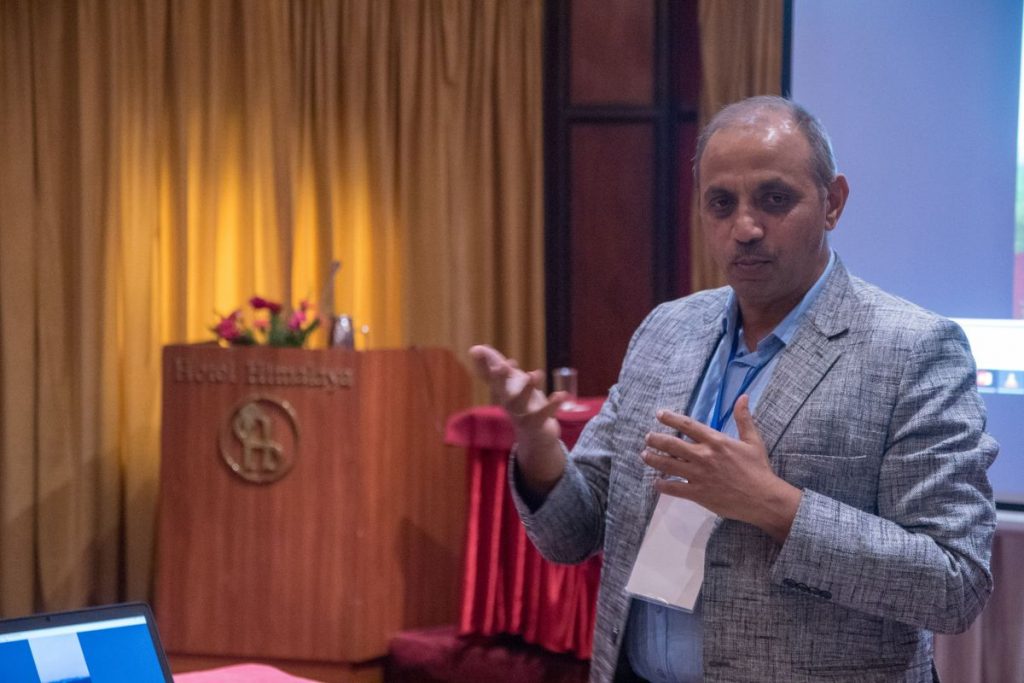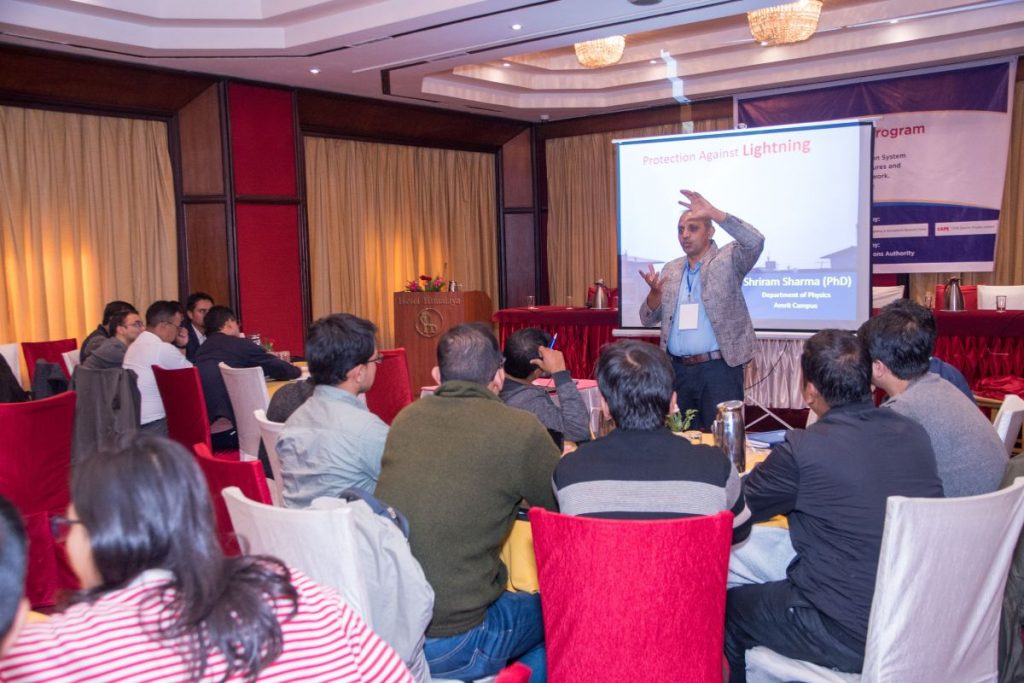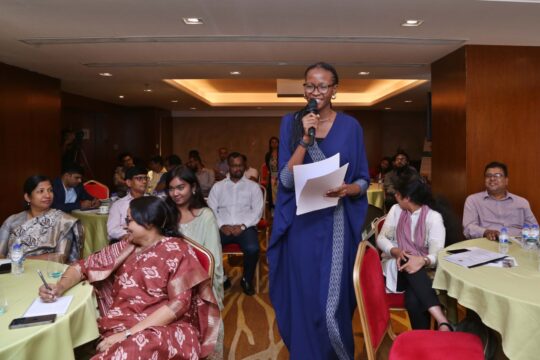The notion that disaster can strike in seconds is commonly overlooked. When lightning hits, it comes with a force- 200,000 mph (300,000 kph) to be precise. The electric charge is more common than we think. Every 100 seconds a bolt of lightning hits the ground somewhere around the world. These numbers accumulate to more than 8 million lightning strikes a day.
Incidences of lightning are the second deadliest catastrophe of death in Nepal. Lightning strikes have caused more than 773 deaths and 1,695 injuries between 2011/12 and 2017/2018. Preparedness for these disasters requires more attention because what strikes in seconds can leave damages that incur for years to a lifetime.
The Protection against Lightning (PaL) Training seeks to train individuals to prepare themselves before the next shock.
Flash Forward from Childhood
Lightning struck very close to home during Dr. Shriram Sharma’s childhood. It sparked his interest to study and research the phenomena, “Lightning is common during the pre-monsoon season. When I was 10, my mother and sister had gone to a neighbor’s house during one of these storms. My sister was struck and fell unconscious for two hours during which my mother was frantic and the gathering of people chanting mantras.” The youth would eventually take this event to shape his academic career. He received a Ph.D. in the electromagnetic field of lightning from a sandwich program between Uppsala University Sweden and Colombo University Sri Lanka in 2007.

Dr. Shriram’s most recent publication investigates unusual lightning events in both Uppsala, Sweden, and Kathmandu, Nepal through observations implementing an electrical field measuring system, “I wanted to continue to investigate the subject matter in my home country. I started investigating the scenario in Nepal and organized seminars with university students from a physics background and technocrats.” These seminars gave Dr. Shriram insight into an understanding of lightning at a societal level. The academic became determined to raise awareness, “I was astounded to find out that lightning was not in the list of natural hazards. I realized that I needed to shift my focus to raising awareness with people at all levels. We also neglect to realize the damage and property loss that is caused by these occurrences.”
Nepal incurred NPR 14,687,000 of loss from the 432 incidents; these damages affected 618 families and completely destroyed 23 homes between 2017-2018. The nation has witnessed over 1,000 houses damaged with 7,758 families affected by lightning incidence in the last 40 years.
Under One Cloud- Knowledge Across Horizons
The most effective awareness needs coordination. Dr. Shriram began such efforts with the Nepal Academy of Science and Technology (NAST), “We organized an International Symposium on Lightning Protection in 2011, with technical support from Non-Aligned Movement Countries Science and Technology Center (NAMS&T center) New Delhi, India. The event saw over 120 participants from 18 countries and included a large number of engineers from Nepal.” The diversity of the symposium became a more insightful learning experience than expected. “It was a turning point for many African countries motivating them to establish centers to raise awareness on a much larger scale with a focus on those individuals attending school.” Runyanya Primary School in rural Uganda experienced a lightning disaster earlier that year. The incident killed 20 students and injured 100 more. A 2018 study of eight African countries found that there are 500 lightning casualties every year.
Awareness is a global concern when considering climate change. Lightning is expected to increase by 12% per degree of Celsius of warming, which leads to a 50% rise over the 21 century. The success of the symposium led NAST to organize further seminars at different levels- these included sessions with government organizations and NGOs across Nepal.
The researcher prioritizes knowledge dissemination of the matter, “Most people in Nepal are unaware of the hazards of lightning. It has not been incorporated into the national curricula or included in the national disaster risk reduction plan. Consequently, an understanding of lightning and its physics is very limited even amongst technocrats and policymakers. We need to start by educating individuals across all sectors about the multidimensional hazards of lightning.” National level disaster data has identified lightning as one of the top five deadly disasters in terms of intensity and impact.
Charged for Change
Dr. Shriram’s comprehension of protection against lightning hazards at the engineering level inspired him to conduct training regarding the matter, “I expanded my training to engineers, academicians, and policy-makers. It eventually connected me with the Asian Preparedness Partnership established by ADPC with Support from Bill and Melinda Gates Foundation (BMGF).” The PaL training engages participants through a plethora of activities. He has been facilitating PaL training for 12 years, “We believe knowledge is the foundation of any training. Our three-day sessions begin with relevant videos, knowledge products, experience sharing, and question/answer sessions.” They have conducted over 70 programs with more than 1,000 participants in total.

The training program gained leverage after 2018 according to Dr. Shriram- “We started seeing an increase in attendees when we started partnering with APP, and a similar model was adopted when working with WWF’s Hariyo Ban Program.” His team recommends organizing an orientation on the first day and technical training for the second and third. “Participants come from various backgrounds and technical training. A majority of attendees are engineers but there are also elected representatives and individuals who are not from the electrical background. They become a specific homogenous group that allows me to engage them in group discussions and on-site demos. We also encourage knowledge sharing amongst participants through tabletop exercises and interactions.”
The training course also works toward dispelling previous notions. Dr. Shriram equates these beliefs to perceived myths, “The potential threat of lightning is underestimated largely because a significant portion of society believes that lightning is a weapon being hurled by the supernatural power to kill centipedes.” The trainers explain the science behind lightning with the context of the attendees’ experiences and observations into consideration. “Participants come into training with these perceptions because the basics of lightning phenomena are not included in academic curricula.”
Click the link to read, Bolting into Action- Meet the Students (Part II).


